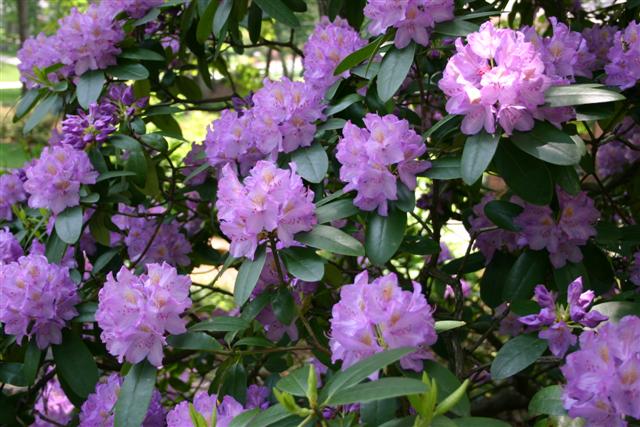
Check out our
Design Services.
| Poisonous Landscape Plants |

|
Need design help? Check out our Design Services. |
| Common Name | Botanical Name | Poisonous Parts |
| Monkshood | Aconitum spp. | All Parts |
| Buckeyes | Aesculus spp. | Seeds, Leaves, Sprouts |
| Florida Leucothoe | Agarista populifolia | Leaves |
| Elephant Ears | Alocasia spp. | All Parts |
| Autumn Crocus | Colchicum spp. | All Parts |
| Scotch Broom | Cytisus scoparius | All Parts |
| Daphne | Daphne spp. | All Parts |
| Delphium; Larkspur | Delphium spp. | All Parts |
| Foxglove | Digitalis spp. | All Parts |
| Snakeroot | Eupatorium rugosum | All Parts |
| Coral Bean | Erythrina spp. | All Parts |
| Carolina and Swamp Jessamine | Gelsemium spp. | All Parts |
| Glory Lily | Gloriosa superba | All Parts |
| Mountain and Swamp Laurels | Kalmia spp. | All Parts |
| Golden Chain Tree | Laburnum anagyroides | All Parts |
| Lantana | Lantana camara | Berries |
| Doghobble | Leucothoe spp. | Leaves, Nectar from flowers |
| Privet | Ligustrum spp. | Berries |
| Tomato | Lycopersicon esculentum | Leaves, Stems, Roots; Fruit is edible |
| Fetterbush | Lyonia spp. | Leaves, Nectar from Flowers |
| Oleander | Nerium oleander | All parts (even if brown) |
| Flowering Tobacco; Tobacco | Nicotiana spp. | All Parts |
| Virginia Creeper | Parthenocissus quinquefolia | Berries |
| Pokeweed | Phytolacca americana | All Parts (young leaves edible if prepared correctly) |
| Pieris | Pieris spp. | Leaves; Nectar from flowers |
| Mayapple | Podophyllum peltatum | Leaves; Unripe Fruit (edible when ripe) |
| Apricot | Prunus armeniaca | Leaves, Twigs, Seeds; Fruit is edible |
| Cherry | Prunus avium | Leaves, Twigs, Seeds; Fruit is edible |
| Cherry Laurel | Prunus caroliniana | Leaves, Twigs, Seeds |
| English Laurel | Prunus laurocerasus | Leaves, Twigs, Seeds |
| Peach | Prunus persica | Leaves, Twigs, Seeds; Fruit is edible |
| Black/Wild Cherry | Prunus serotina | Leaves, Twigs, Seeds |
| Rhododendron; Azalea | Rhododendron spp. | All Parts |
| Jetbead | Rhodotypos scandens | Berries |
| Castor Bean | Ricinus communis | Seeds (Beans) |
| Bloodroot | Sanguinaria canadensis | Roots (tubers) |
| Scilla/Squill | Scilla spp. | All Parts |
| Nightshade | Solanum spp. | Leaves, Berries |
| Potato | Solanum tuberosum | Leaves, Sprouts; Tubers are edible |
| Yew | Taxus spp. | Bark, Leaves, Seeds |
| Vinca | Vinca spp. | All Parts |
| Calla Lily | Zantedeschia spp. | All Parts |
| Rain Lily | Zephyranthes atamasco | All Parts, especially the bulb |